Beijing, (formerly called Peking, Beiping, Dadu, Jingcheng, and Yanjing in different periods of Chinese history) is the capital city of the People's Republic of China. It is also the nation's political and cultural hub. Additionally, it is the focal point for the country's transportation, scientific and technological development, education and communication. Its present-day population is over eleven million, thus,it is the second largest city in China.
Beijing is universally acknowledged for its rich history and cultural development. It is also recognized as a modern international metropolis full of energy and vitality. It is located on the northwest part of Huabei Campagna (the North China Plain) about 150 kilometers (93 miles) west of the Bohai Sea. It has been the capital city of many dynasties in Chinese history. The city's grid pattern and original walls were first laid down in the 13th century when it was called Khanbalik, the capital city of the Yuan Dynasty (1271-1368). It was razed, rebuilt and named Beijing by the Han Chinese rulers of the subsequent Ming Dynasty (1368-1644). It also served as capital city of the Qing Dynasty (1644-1911).
Beijing is world-famous for its trove of historical sites and enchanting natural scenery. It offers a staggering array of attractions including the resplendent Forbidden City; the majestic Tiananmen Square (the world's largest public square); the grand meandering Great Wall, and Beihai Park (Beijing's oldest imperial garden). It's a remarkable city offering an abundance of ancient and modern architecture, temples, gardens, and museums and a variety of colorful local flavors and customs.
Beijing is the main transportation hub of northern China. Frequent flights, modern roads, and high speed railway systems make it easy for visitors to reach Beijing. Crisscross roads make the urban transportation generally fast and convenient; however, you may encounter traffic jam sometimes due to more than 5 million vehicles that the city owns. It is also a great walking city ranging from wide boulevards like Wangfujing to the narrow alleyways of the ancient Hutong district.
Well known dishes of Beijing include the Roast Duck and the Imperial Court Food. Nowhere else on earth will you find such a variety of gourmet restaurants offering the very best of Chinese and western dishes. Beijing is truly a shopper's paradise. The most famous and popular shopping destinations are the Yansha and Guomao Shopping Malls, Xidan Street and streets near Tiananmen Square such as the Wangfujing and Qianmen Streets. Nighttime in Beijing can hold other surprises for you. These can vary from traditional performances such as the Beijing opera, acrobatics and martial arts to modern ones like concerts, pubs and clubs. Tianqiao Area and Laoshe Teahouse are good venues for tourists to enjoy Chinese folk culture; while Sanlitun Bar Street and the nearby embassy area is an ideal choice if you are a party-loving night owl.
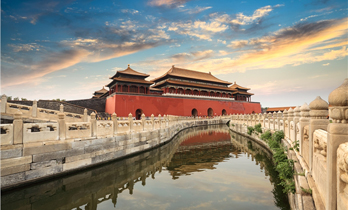
The Forbidden City, which housed 24 emperors of the Ming and Qing dynasties (1368–1911), is the best preserved imperial palace in China and the largest ancient palatial structure in the world. The design and the layout of the 870 buildings in the palace represent the essence of traditional Chinese architecture.

Tian'anmen Square is the largest public square, and can accommodate a million people. It is where the ceremony for the founding of the People’s Republic was held.

The Great Wall of China extends 4,000 miles. Construction of the wall began over 2,000 years ago and lasted for over 1,000 years. There are several Great Wall sections around Beijing, including restored sections and rugged sections.
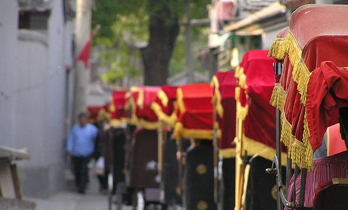
The Beijing hutongs are mazes of narrow alleyways linking old single-story traditional courtyard houses. Hutongs give a wonderful glimpse into the world of yesterday in Beijing. Visiting a hutong family living in a traditional quadrangle dwelling is a nice way to discover traditional Beijing life.
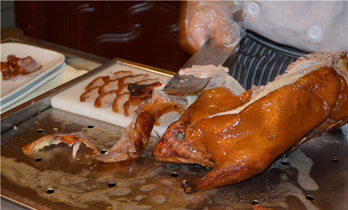
Beijing roast duck is the epitome of Beijing cuisine and also one of the eight most popular Chinese dishes. The dish is mostly prized for the thin, crispy skin, with authentic versions of the dish serving mostly the skin and little meat.
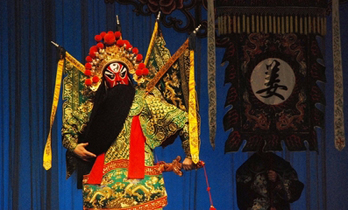
Beijing Opera is regarded as Chinese cultural treasure. The make up, the face masks, the gorgeous costumes, the unique vocal style, and the demanding actions make Beijing opera a high-class performance entertainment.

Located to the west of the Forbidden City and Jingshan Park, Beihai Park is the oldest existing imperial garden in China. First built in the Liao Dynasty (907—1125), you will see how Chinese garden were built based on fairy stories.
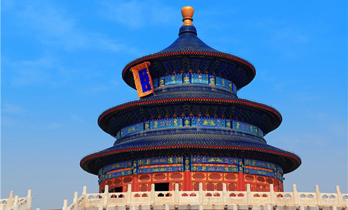
The Temple of Heaven, the royal altar where the emperors of the Ming and Qing dynasties worshipped heaven, is seen as the most holy of Beijing's imperial temples. It has been described as "a masterpiece of architecture and landscape design".

The Summer Palace is the best-preserved imperial garden in the world, and the largest of its kind still in existence in modern China. It is a representative of traditional Chinese garden and a charming place to appreciate the artificial landscape first created hundreds of years ago.

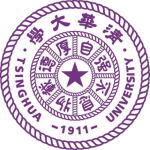

About CICTP
Quick Links
Contact
Tsinghua University:
Dr. Diange Yang (ydg@mail.tsinghua.edu.cn)
COTA:
Dr. Xiaokun (Cara) Wang (wangx18@rpi.edu), or
Dr. Yu Zhang (yuzhang@usf.edu).